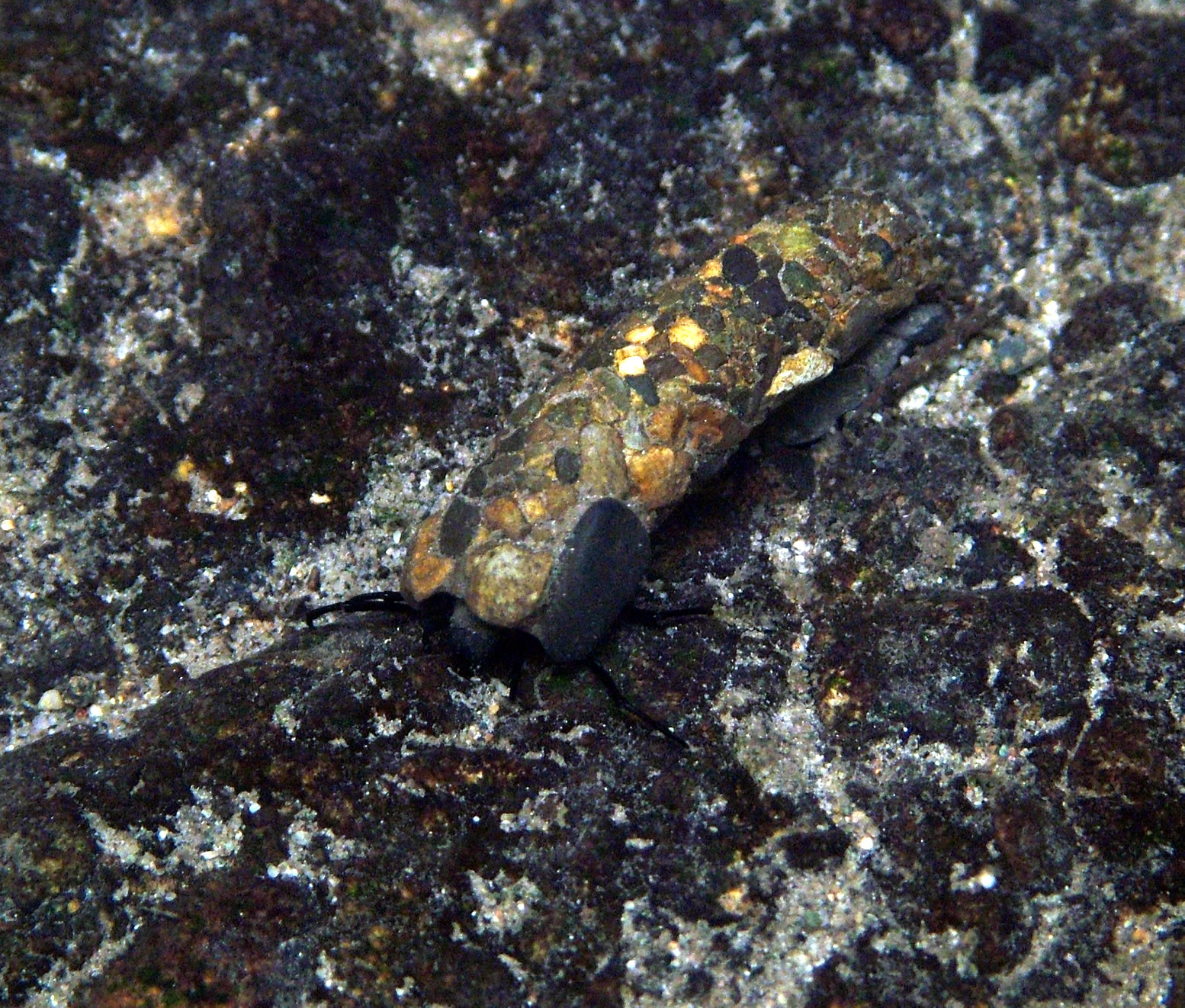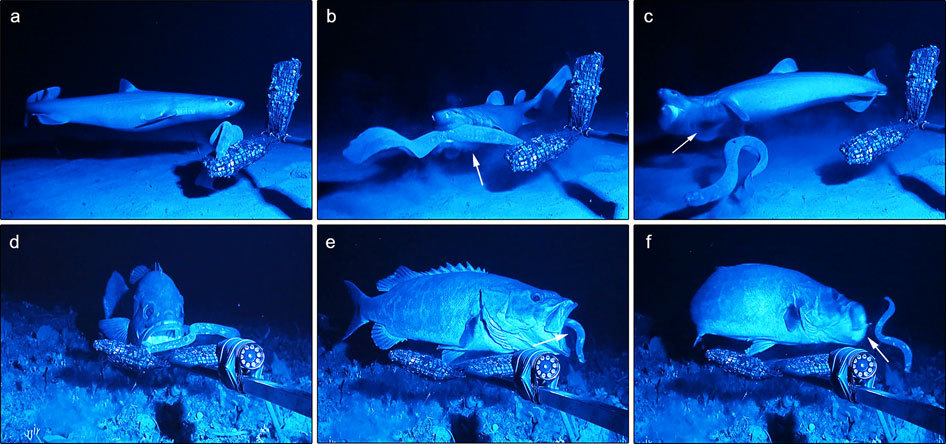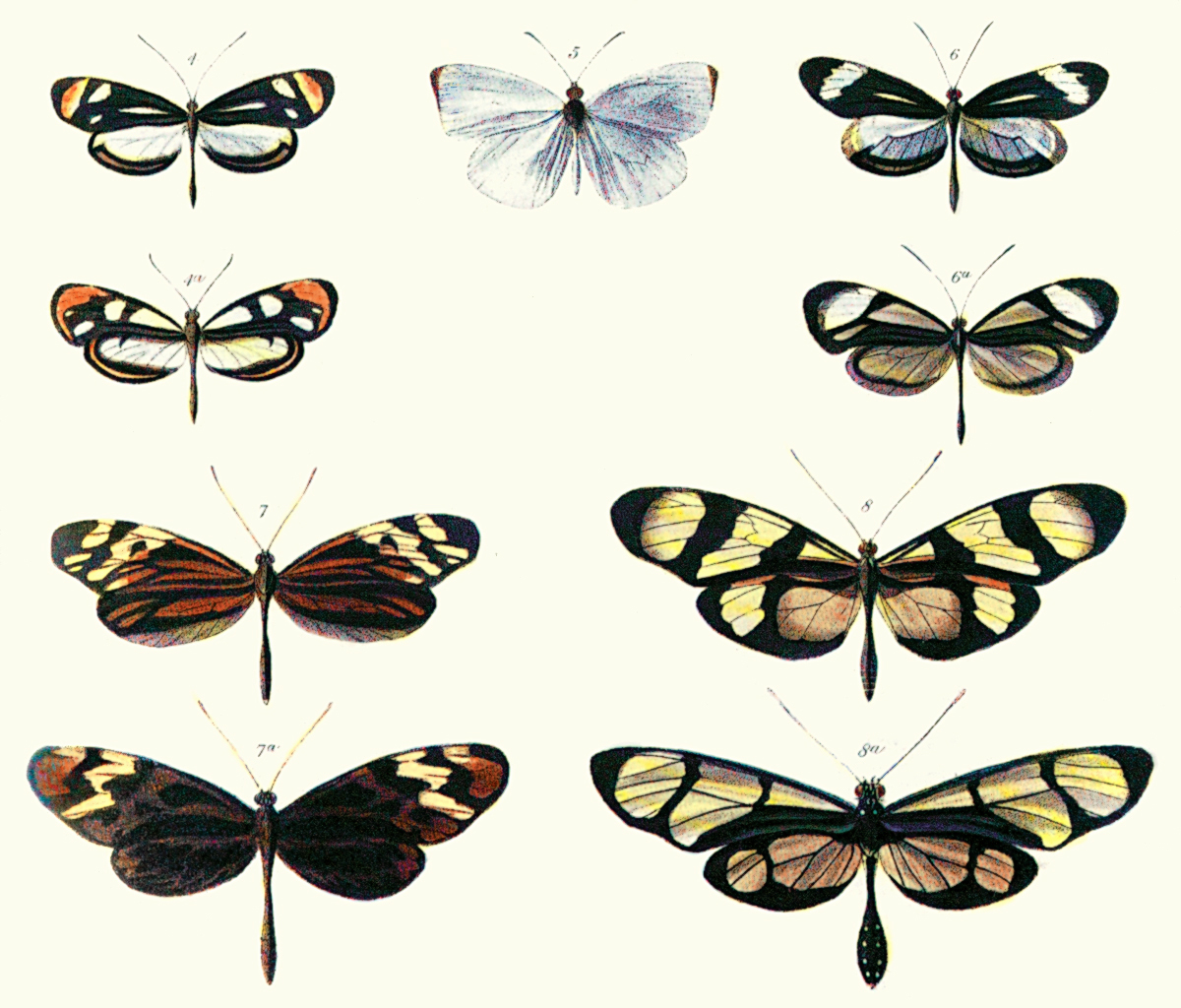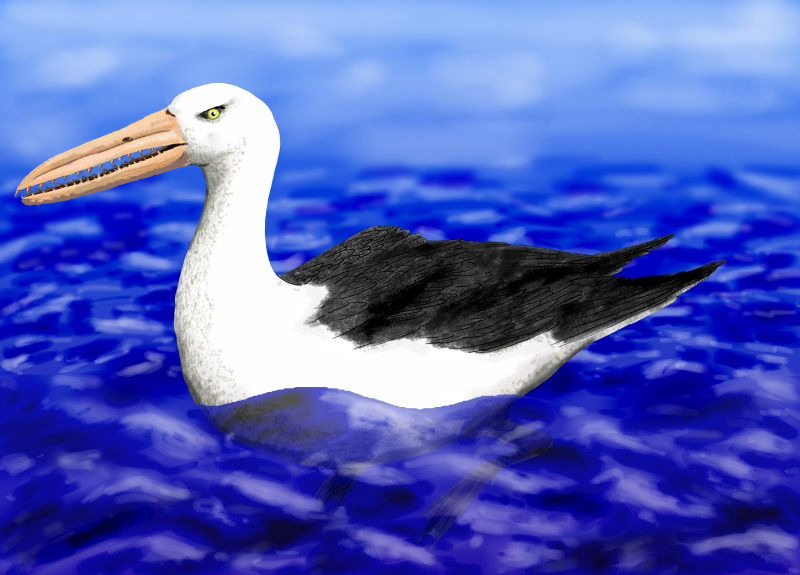|
Self-decoration
Self-decoration camouflage is a method of camouflage in which animals or soldiers select materials, sometimes living, from the environment and attach these to themselves for concealment. The method was described in 1889 by William Bateson, who observed ''Stenorhynchus'' decorator crabs. It was classified as "adventitious protection" by Edward Bagnall Poulton in 1890, and as "adventitious concealing coloration" or "adventitious resemblance" by Hugh Bamford Cott in 1940, who compared it to the way Australian aborigines stalked waterfowl, covering their faces with water lily leaves. Among animals, self-decoration is found in decorator crabs, some insects such as caddis flies and the masked hunter bug, and occasionally also in octopuses. In military camouflage, it is seen in the use of ghillie suits by snipers and the helmet nets of soldiers more generally, when these are camouflaged by inserting grass and other local plant materials, and in a more general way by the use of decora ... [...More Info...] [...Related Items...] OR: [Wikipedia] [Google] [Baidu] |
Antipredator Adaptation
Anti-predator adaptations are mechanisms developed through evolution that assist prey organisms in their constant struggle against predators. Throughout the animal kingdom, adaptations have evolved for every stage of this struggle, namely by avoiding detection, warding off attack, fighting back, or escaping when caught. The first line of defence consists in avoiding detection, through mechanisms such as camouflage, masquerade, apostatic selection, living underground, or nocturnality. Alternatively, prey animals may ward off attack, whether by advertising the presence of strong defences in aposematism, by mimicking animals which do possess such defences, by startling the attacker, by signalling to the predator that pursuit is not worthwhile, by distraction, by using defensive structures such as spines, and by living in a group. Members of groups are at reduced risk of predation, despite the increased conspicuousness of a group, through improved vigilance, predator confus ... [...More Info...] [...Related Items...] OR: [Wikipedia] [Google] [Baidu] |
Decorator Crab
Decorator crabs are crabs of several different species, belonging to the superfamily Majoidea (not all of which are decorators), that use materials from their environment to hide from, or ward off, predators. They decorate themselves by sticking mostly sedentary animals and plants to their bodies as camouflage, or if the attached organisms are noxious, to ward off predators through aposematism. History In 1889, William Bateson observed in detail the way that decorator crabs fix materials on their backs. He noted that "the whole proceeding is most human and purposeful", and that if a ''Stenorhynchus'' crab is cleaned, it will "''immediately'' begin to clothe itself again with the same care and precision as before". In his ''The Colours of Animals'' (1890), Edward Bagnall Poulton classified protective animal coloration into types such as warning colours and protective mimicry. He included self decoration under the heading "Adventitious Protection", quoting Bateson's account of de ... [...More Info...] [...Related Items...] OR: [Wikipedia] [Google] [Baidu] |
The Colours Of Animals
''The Colours of Animals'' is a zoology book written in 1890 by Sir Edward Bagnall Poulton (1856–1943). It was the first substantial textbook to argue the case for Darwinian selection applying to all aspects of animal coloration. The book also pioneered the concept of frequency-dependent selection and introduced the term "aposematism". The book begins with a brief account of the physical causes of animal coloration. The second chapter gives an overview of the book, describing the various uses of colour in terms of the advantages it can bring through natural selection. The next seven chapters describe camouflage, both in predators and in prey. Methods of camouflage covered include background matching, resemblance to specific objects such as bird droppings, self-decoration with materials from the environment, and the seasonal colour change of arctic animals. Two chapters cover warning colours, including both Batesian mimicry, where the mimic is edible, and Mullerian mimicry, w ... [...More Info...] [...Related Items...] OR: [Wikipedia] [Google] [Baidu] |
Mimicry
In evolutionary biology, mimicry is an evolved resemblance between an organism and another object, often an organism of another species. Mimicry may evolve between different species, or between individuals of the same species. Often, mimicry functions to protect a species from predators, making it an anti-predator adaptation. Mimicry evolves if a receiver (such as a predator) perceives the similarity between a mimic (the organism that has a resemblance) and a model (the organism it resembles) and as a result changes its behaviour in a way that provides a selective advantage to the mimic. The resemblances that evolve in mimicry can be visual, acoustic, chemical, tactile, or electric, or combinations of these sensory modalities. Mimicry may be to the advantage of both organisms that share a resemblance, in which case it is a form of mutualism; or mimicry can be to the detriment of one, making it parasitic or competitive. The evolutionary convergence between groups is driven b ... [...More Info...] [...Related Items...] OR: [Wikipedia] [Google] [Baidu] |
Sea Anemone
Sea anemones are a group of predatory marine invertebrates of the order Actiniaria. Because of their colourful appearance, they are named after the '' Anemone'', a terrestrial flowering plant. Sea anemones are classified in the phylum Cnidaria, class Anthozoa, subclass Hexacorallia. As cnidarians, sea anemones are related to corals, jellyfish, tube-dwelling anemones, and ''hydra (genus), Hydra''. Unlike jellyfish, sea anemones do not have a Jellyfish#Life history and behavior, medusa stage in their life cycle. A typical sea anemone is a single polyp (zoology), polyp attached to a hard surface by its base, but some species live in soft sediment, and a few float near the surface of the water. The polyp has a columnar trunk topped by an oral disc with a ring of tentacles and a central mouth. The tentacles can be retracted inside the body cavity or expanded to catch passing prey. They are armed with cnidocytes (stinging cells). In many species, additional nourishment comes from a sy ... [...More Info...] [...Related Items...] OR: [Wikipedia] [Google] [Baidu] |
Sponge
Sponges, the members of the phylum Porifera (; meaning 'pore bearer'), are a basal animal clade as a sister of the diploblasts. They are multicellular organisms that have bodies full of pores and channels allowing water to circulate through them, consisting of jelly-like mesohyl sandwiched between two thin layers of cells. Sponges have unspecialized cells that can transform into other types and that often migrate between the main cell layers and the mesohyl in the process. Sponges do not have nervous, digestive or circulatory systems. Instead, most rely on maintaining a constant water flow through their bodies to obtain food and oxygen and to remove wastes. Sponges were first to branch off the evolutionary tree from the last common ancestor of all animals, making them the sister group of all other animals. Etymology The term ''sponge'' derives from the Ancient Greek word ( 'sponge'). Overview Sponges are similar to other animals in that they are multicell ... [...More Info...] [...Related Items...] OR: [Wikipedia] [Google] [Baidu] |
Hydrozoa
Hydrozoa (hydrozoans; ) are a taxonomic class of individually very small, predatory animals, some solitary and some colonial, most of which inhabit saline water. The colonies of the colonial species can be large, and in some cases the specialized individual animals cannot survive outside the colony. A few genera within this class live in freshwater habitats. Hydrozoans are related to jellyfish and corals and belong to the phylum Cnidaria. Some examples of hydrozoans are the freshwater jelly ('' Craspedacusta sowerbyi''), freshwater polyps (''Hydra''), '' Obelia'', Portuguese man o' war (''Physalia physalis''), chondrophores (Porpitidae), " air fern" (''Sertularia argentea''), and pink-hearted hydroids ('' Tubularia''). Anatomy Most hydrozoan species include both a polypoid and a medusoid stage in their lifecycles, although a number of them have only one or the other. For example, ''Hydra'' has no medusoid stage, while '' Liriope'' lacks the polypoid stage. Polyps The hydro ... [...More Info...] [...Related Items...] OR: [Wikipedia] [Google] [Baidu] |
Predator
Predation is a biological interaction where one organism, the predator, kills and eats another organism, its prey. It is one of a family of common feeding behaviours that includes parasitism and micropredation (which usually do not kill the host) and parasitoidism (which always does, eventually). It is distinct from scavenging on dead prey, though many predators also scavenge; it overlaps with herbivory, as seed predators and destructive frugivores are predators. Predators may actively search for or pursue prey or wait for it, often concealed. When prey is detected, the predator assesses whether to attack it. This may involve ambush or pursuit predation, sometimes after stalking the prey. If the attack is successful, the predator kills the prey, removes any inedible parts like the shell or spines, and eats it. Predators are adapted and often highly specialized for hunting, with acute senses such as vision, hearing, or smell. Many predatory animals, both vertebra ... [...More Info...] [...Related Items...] OR: [Wikipedia] [Google] [Baidu] |
Hyastenus Elatus
''Hyastenus elatus'' is a species of crab Crabs are decapod crustaceans of the infraorder Brachyura, which typically have a very short projecting "tail" (abdomen) ( el, βραχύς , translit=brachys = short, / = tail), usually hidden entirely under the thorax. They live in all the ... in the family Epialtidae. It is one of several decorator crabs, habitually covering itself in aposematic sponges which may also serve as camouflage. References Majoidea Crustaceans of the Pacific Ocean Crustaceans described in 1986 {{crab-stub ... [...More Info...] [...Related Items...] OR: [Wikipedia] [Google] [Baidu] |
Methuen Publishing
Methuen Publishing Ltd is an English publishing house. It was founded in 1889 by Sir Algernon Methuen (1856–1924) and began publishing in London in 1892. Initially Methuen mainly published non-fiction academic works, eventually diversifying to encourage female authors and later translated works. E. V. Lucas headed the firm from 1924 to 1938. Establishment In June 1889, as a sideline to teaching, Algernon Methuen began to publish and market his own textbooks under the label Methuen & Co. The company's first success came in 1892 with the publication of Rudyard Kipling's ''Barrack-Room Ballads''. Rapid growth came with works by Marie Corelli, Hilaire Belloc, Robert Louis Stevenson, and Oscar Wilde ('' De Profundis'', 1905) as well as Edgar Rice Burroughs’ ''Tarzan of the Apes''.Stevenson, page 59. In 1910 the business was converted into a limited liability company with E. V. Lucas and G.E. Webster joining the founder on the board of directors. The company published the 1920 En ... [...More Info...] [...Related Items...] OR: [Wikipedia] [Google] [Baidu] |
Waterfowl
Anseriformes is an order of birds also known as waterfowl that comprises about 180 living species of birds in three families: Anhimidae (three species of screamers), Anseranatidae (the magpie goose), and Anatidae, the largest family, which includes over 170 species of waterfowl, among them the ducks, geese, and swans. Most modern species in the order are highly adapted for an aquatic existence at the water surface. With the exception of screamers, males have penises, a trait that has been lost in the Neoaves. Due to their aquatic nature, most species are web-footed. Evolution Anseriformes are one of only two types of modern bird to be confirmed present during the Mesozoic alongside the other dinosaurs, and in fact were among the very few birds to survive their extinction, along with their cousins the galliformes. These two groups only occupied two ecological niches during the Mesozoic, living in water and on the ground, while the toothed enantiornithes were the dominant bir ... [...More Info...] [...Related Items...] OR: [Wikipedia] [Google] [Baidu] |


.jpg)





_with_its_prey.jpg)
